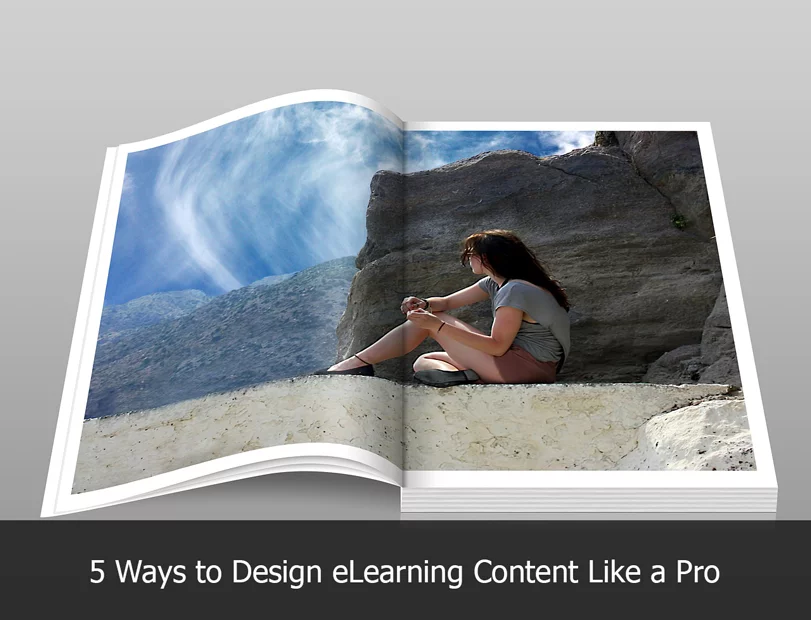5 Ways to Design eLearning Content Like a Pro

So much of eLearning and multimedia-based learning is about the visual elements. Yes, the content is important but when you’re presenting content in this unique way, what it looks like tends to take center stage.

That’s not to say the visual elements should overwhelm the content—in fact, it’s really just the opposite. You should design your courses so that the visual complements the information and reinforces the learning process.
This is something graphic designers become expert at, but how do you design like a pro even if you’re not?
Download this free whitepaper 10 Ideas To Optimize Online Training And Maximize Impact
Consider these tips:
Keep It Simple
You may think that designing your content like a pro means filling up every available inch with graphics and information and incorporating complex imagery, but that couldn’t be farther from the truth.
A good graphic designer knows how to create content that’s simple, elegant and beautifully laid out. Simple screen design is most engaging to learners and it’s just more visually pleasing than something that feels jumbled or overwhelming. If your content is jumbled and overwhelming, your learners are likely to feel the same way as they’re trying to take in the information.
What is the ultimate rule to think like a graphic designer in this context? Less is more.
White Space is Not Empty Space
White space on a learning screen can accomplish so much and part of good design is knowing how to harness the power of white space.
When you use white space in your content, it gives your learner a moment to take a break and absorb the information being presented in a more manageable way. It also accomplishes the simple goal of making content more readable.
Understand How Your User Will Experience the Content
A professional graphic designer doesn’t just try to create content that “looks pretty.” The goal is instead to understand how a person learns and then try to incorporate that knowledge into the design.
One way to do this is to have a real understanding of the way content will be delivered – for example, learning content that’s mobile is going to be designed very differently from laptop or tablet content and vice versa.
To think like a pro designer, put yourself in the shoes of your learner and specifically think about how information will be delivered and on what type of device.
Be Cohesive
Graphic designers understand that how they layout and design multimedia learning, should convey a consistent story or message which really begins with how the screen looks.
Before you jump right into designing learning content, think about how you can link not just the content in a way that makes sense, but also the visuals.
By planning the larger designer ideas ahead of time you can avoid creating eLearning that looks disjointed or nonsensical. When that happens, the learner tends to check out because there isn’t a logical flow their brain can follow, even if the information itself flows.
Be Subtle With Emotional Cues
There can be a tendency with people who aren’t design professionals to want to spell out every idea and every emotion they hope to evoke, but the pros know that you can accomplish this in more subtle ways through elements like font and color.
Before you embark on your design journey, do a little research on the psychology of learning and incorporate visual elements that aren’t in the learners face but still accomplish the goal you’re going for. You can make some information more salient, or you can create a light, humorous tone just by the way you design your coursework.
Do you have experience designing multimedia learning? If so, do you have any tips that can help novices design like a pro?